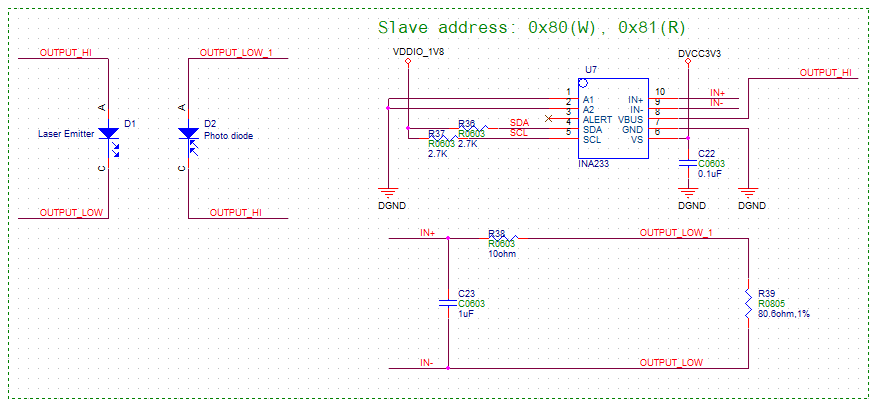Hello TI teams,
Nice to see you.
We would like to use the INA233 to get the current pulse which current would be smaller than 1mA of photo diode.
And the frequency of our current pulse would be 30Hz / Duty Cycle 0.9% / Pulse on 0.3msec (which means 0.3msec on / 32.7msec off in one peroid).
The coeiffeicent which we used in INA233 as below:
Current_LSB = 1000uA / (2^15) = 3.05 x 10^ -8
CAL = 0.00512 / Current_LSB * R = 0.00512 / (3.05x10^-8) * (80.6 ohm) = 2081.54 -> Hex: 0x0822
We could sense the costant current about 500uA already in continue mode.
We try to measure the current pulse in 500uA / Pulse on:0.1sec, Pulse off: 0.1sec,
and set the number of average(AVG) as 1,
But we get the result as below:
a. 300usec conversion time = 370uA (4097h) in continue mode
b. 100usec conversion time = 199uA (4007h) in continue mode
Could you please help us how to set the right register setting of trigger mode to get the pulse max. current value?
Please kindly to help us.
Thank you so much.
The application and schemaic design as below:
Best regards,
Muller


